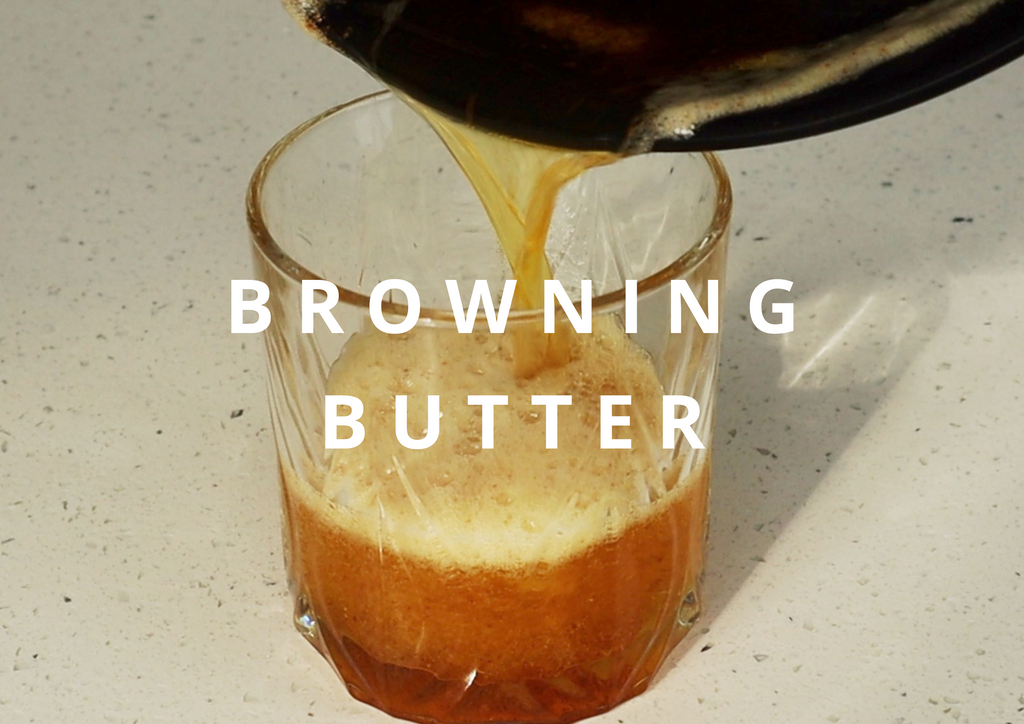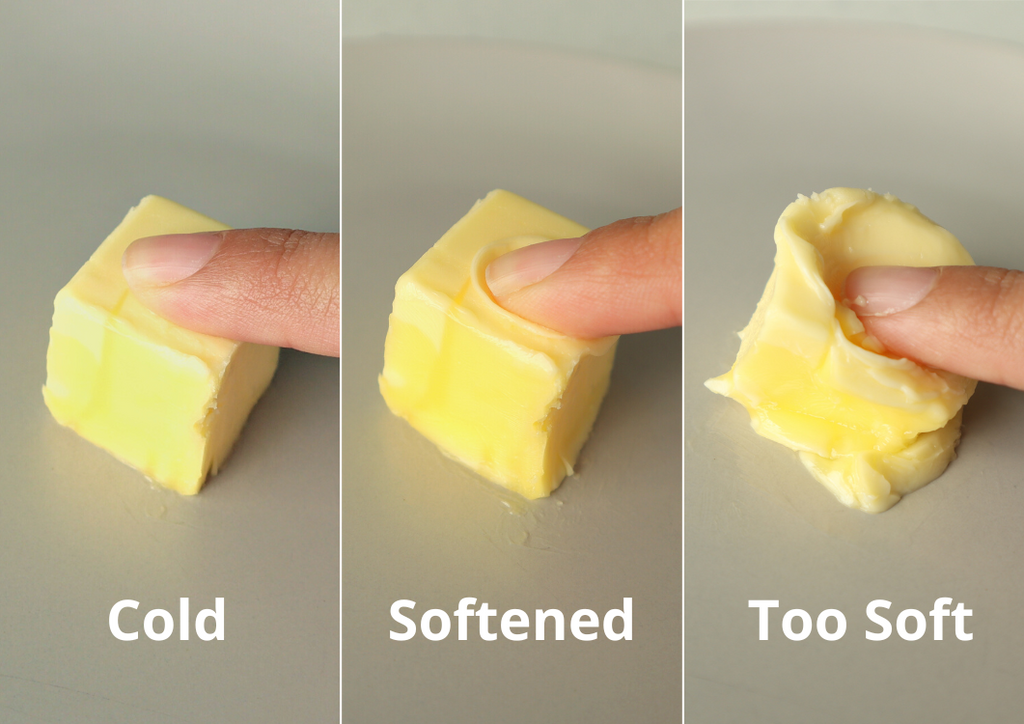Our signature pineapple tarts baking kits are coming back soon!
- About Us
- CHRISTMAS KITS
-
Baking Kits
- contact us
Our signature pineapple tarts baking kits are coming back soon!
March 02, 2023
Butter is a baking ingredient that can be used in many different forms and ways depending on how you want your baked goods to turn out.
Many dessert recipes use softened or melted butter. Is softened butter and melted butter the same? Let's dig deeper into their differences, how we can achieve a particular consistency, and how to choose the right butter for your baking.
Before we learn how butter is used in baking, let’s go back to basics: defining what butter is. Butter is a fat that results from vigorously churned cow’s milk or heavy cream.
The churning process generates fat and liquid. The fat is then processed into a solid fat called butter. Meanwhile, the liquid is separated and fermented to be processed into buttermilk.
Butter is favourable for baking and cooking because it has its own buttery and creamy taste. From sauce to bread, savoury cooking or sweet baked goods, butter can help enhance the end result of your food.
When baking different baked goods, you might often find recipes using one of two different temperatures of butter: softened butter and melted butter, both usually unsalted.
Why do you think different recipes call for different temperatures of butter? Does it actually matter?
In this article, we are going to talk about softened and melted butter.

If you want to know more about brown butter, which is something you can use to elevate your dishes, you can read our complete guide about brown butter here.
Softened butter is used in many recipes and is often creamed with sugar before use.
Unlike softened butter that is still in shape before use, melted butter is just like what it’s called: melted. The butter is heated until it melts and completely turns into liquid.
You can, but it will require you to have a very good understanding of how it affects your recipe, and you will likely have to make changes to your recipe!
If the recipe calls for softened butter and you accidentally melted butter instead of softening it, it’s best that you set aside the melted butter for future use.
Both kinds of butter will yield a very different final result in every baked good.
The recipes that work well with melted butter are brownies, cookies, and loaves. It will bring a nice chew and density to your baked goods, along with added richness.
Leaving It Out
Leave it out at room temperature anywhere between 30 mins to 60 mins (this depends on how warm your kitchen is). In hotter/tropical climates, 30 minutes is typically enough
Using A Hot Dish
Read More: Softening Butter In Singapore — Cooler Than You Think
To tell if your butter is softened, press your finger into it.

If it holds its shape and your finger comes clean without much grease, it’s softened enough for the creaming process. If it’s oily and wet, your butter is much too soft for proper creaming.
Never try to soften your butter by heating it in the microwave!
Butter has a low smoke point, which is the point that fat (in this case, butter) starts smoking.
It’s important to melt it over low heat so you don’t burn the butter, which results in a bitter aftertaste. Using a microwave in small bursts of heat will help you melt your butter quickly and effectively.
If you are new to baking, stick to what the recipe specifies. However, as you learn more about how different forms of butter affect your result differently, it’s time to experiment with getting your perfect treat!
In cookies, softened butter will result in a cakier and airier cookie than using melted butter. This is due to the fact that softened butter will create air bubbles that expand in the oven during baking.
Melted butter will make your cookies delightfully dense on the inside and crisp on the edges.
This is because cookie dough with melted butter will give you extra moisture and spread out more during baking, giving you a softer inside and with thinner, crisper edges. Beyond that, melted butter also adds richness to the cookie.

If you want to learn how to make your perfect cookie, join our all in comprehensive virtual course, where we teach you to make your perfect cookie. Check out The Ultimate Cookie Course.
What about the classic brownie?
If you want a fudgy chocolate brownie, use melted butter.
For cakey brownies, beating softened butter and sugar together to create air pockets will make your brownies lighter and cakier.
—
As you can see, the kind of butter you use will vary greatly depending on what you are looking for in your own recipe.
Even for something as simple as cookies or brownies, a minute detail like this can transform your baking!
Hungry for more baking tips? From baking ingredients to baking equipment, we have all the baking insights for you to learn anytime. Subscribe to our free newsletter for more updates!
Sign up for our free newsletter
Comments will be approved before showing up.
January 03, 2024
December 06, 2022
